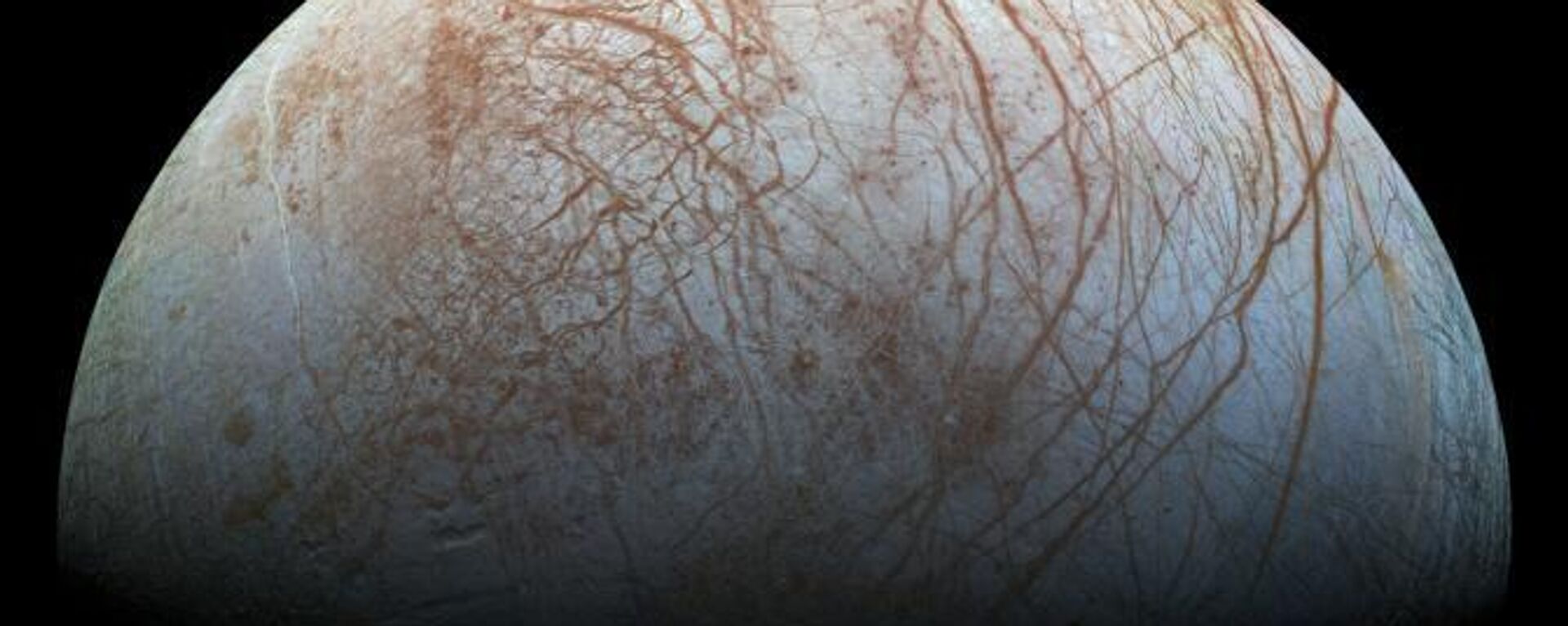How to Watch Long-Forgotten Mysterious 'Green Comet' Zoom Past Earth
10:55 GMT 22.01.2023 (Updated: 10:56 GMT 22.01.2023)
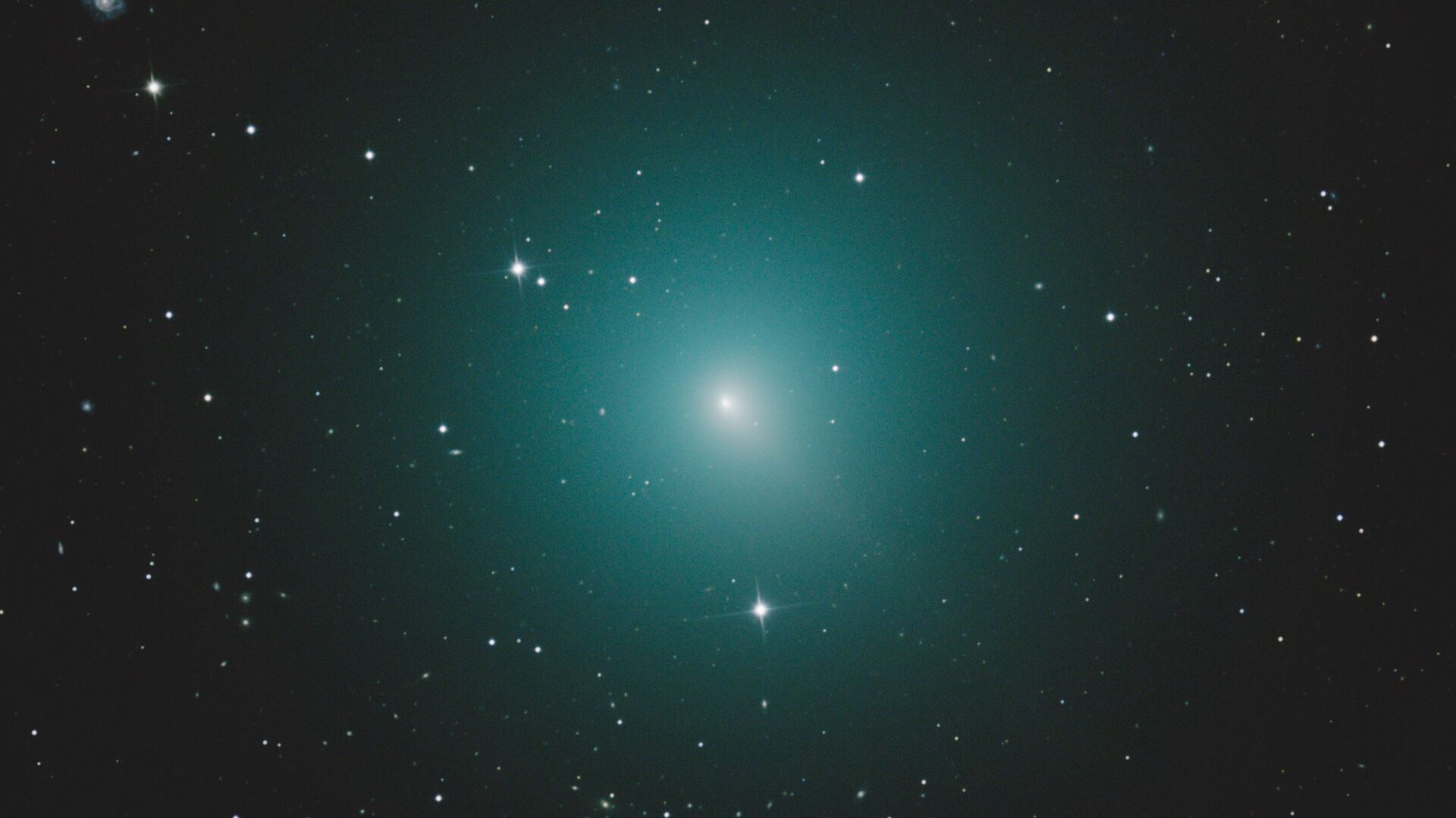
© NASA . (credit: NASA)
Subscribe
The “green" Comet C/2022 E3 (ZTF) was discovered by astronomers at the Zwicky Transient Facility in early March 2022, and estimated that it will make its closest approach to Earth on February 2, coming within 26.4 million miles (42.4 million km) of our planet.
Slowly but surely gaining in brightness, a green-hued, long-forgotten comet is heading towards planet Earth. The comet, known as C/2022 E3 (ZTF), is set to make its closest approach on February 2.
However, one can already observe the intriguing object comprised of dust and ice using binoculars or a telescope, provided the night sky is clear and moonless. Social media is abuzz with photos and footage of the comet.

Twitter screenshot.
© Photo : Twitter
Here is what we know about the green interplanetary visitor, which last flashed past Earth 50,000 years ago, and tips on how to catch a glimpse of it.
What is the 'Green Comet'?
Officially known as Comet C/2022 E3 (ZTF), astronomers were able to discover the extraterrestrial body that everyone is so excited about using an astronomical survey - the Zwicky Transient Facility (or ZTF) - which employs an ultrasensitive camera attached to the Samuel Oschin Telescope at Palomar Observatory, California. Incidentally, that explains the presence of the acronym ZTF in its name. The telescope in question regularly scans the nighttime sky, which is how it made the discovery possible.
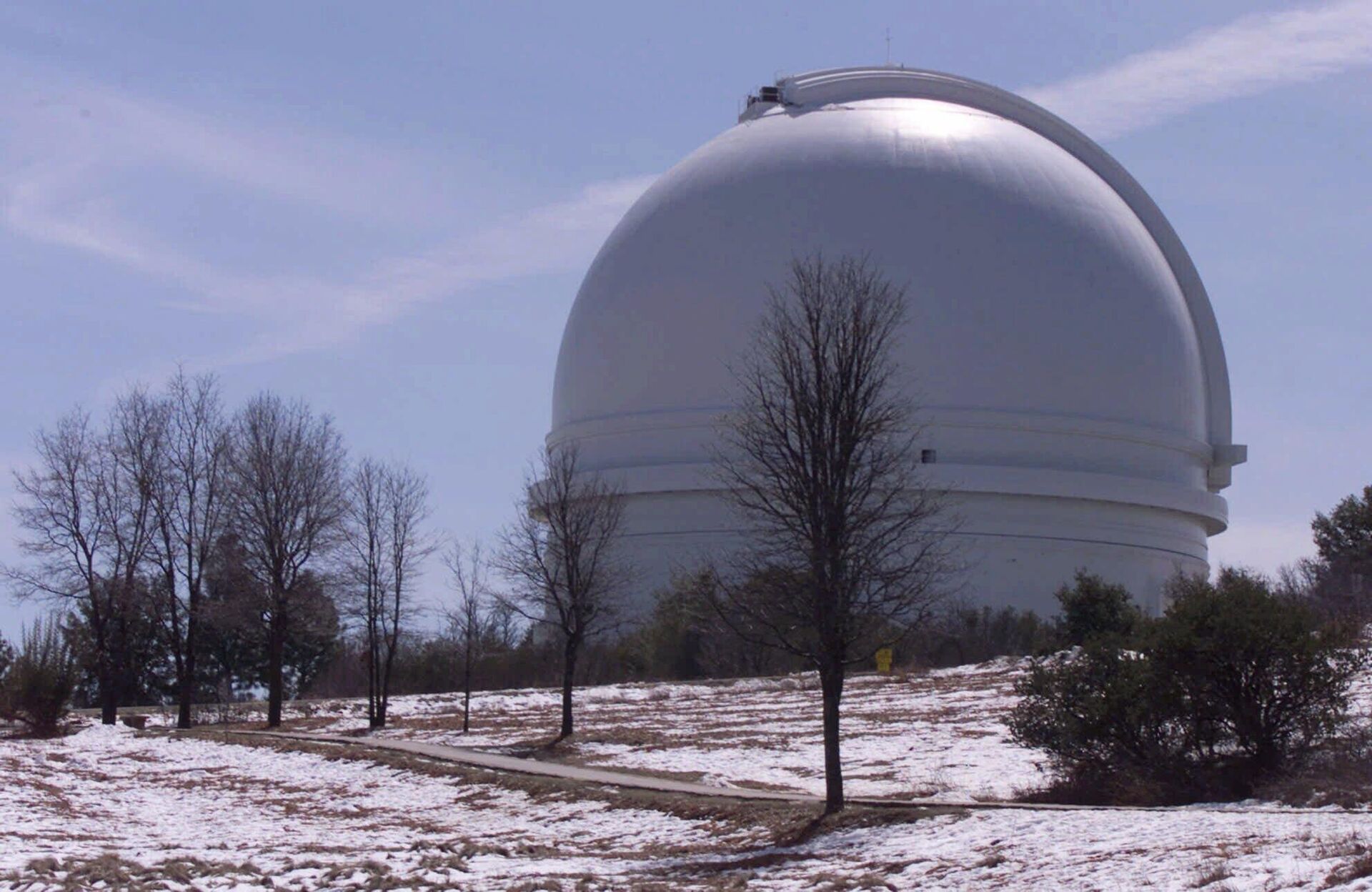
The 200-inch Hale Telescope mirror, located in the Palomar Observatory, seen here Monday, March 5, 2001, in Palomar Mountain, Calif.
© AP Photo / FRED GREAVES
Why is the Green Comet 'Green'?
The comet was nicknamed "green" because of its specific properties. Astronomers say that the greenish hue of its glow is explained by the presence of two molecules: cyanide/cyanogen (CN: a carbon-nitrogen bond) and C2, or diatomic carbon (which is two carbon atoms fused together) in the head of the comet. These molecules, once they are stimulated by incoming ultraviolet light in sunlight, emit photons at wavelengths visible to us as green.
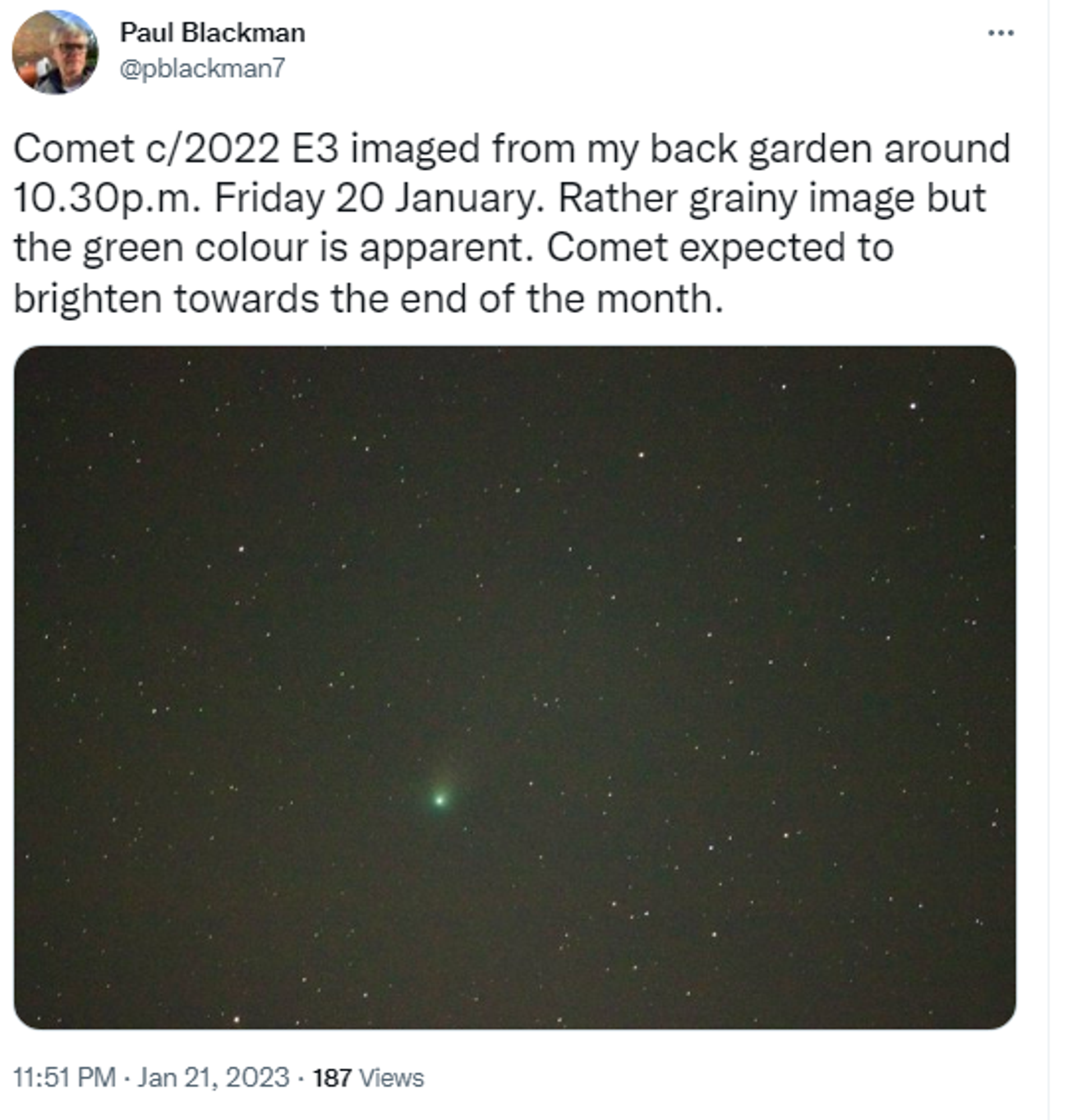
Twitter screenshot.
© Photo : Twitter
What is a Comet?
To put it in simple terms, comets are frozen leftovers from when the solar system was formed out of a cloud of interstellar gas and dust an estimated 4.5 billion years ago.
A comet, accordingly, is a ball of dust, rock, and ice, which is what sets it apart from asteroids, which are generally comprised of rock and metal. Comets may range in size from a few hundred meters to about 20 kilometers across in diameter. For example, the comet Bernardinelli-Bernstein (C/2014 UN271), discovered in 2021, is larger than most known comets - about 120 kilometers wide.
Travelling in highly elliptical orbits, comets usually look like a fuzzy head circling a bright nucleus. This actually explains the name, taken from the Greek "κομητης" ("kometes"), which means “long-haired.”
Most comets are thought to originate from the distant reaches of the solar system, in the Kuiper Belt, and the Oort Cloud. Short-period comets, which orbit the Sun in 200 years or less, are deemed to be from the Kuiper Belt, while those that are long-period comets - like our green visitor - take hundreds or thousands of years to orbit the Sun, and typically hail from the Oort Cloud.
As for why these comets suddenly set off on their sojourns, it is believed that the millions of objects that orbit the Sun jostle each other with their gravity, their agitations pushing comets into orbits taking them on a closer orbit to the Sun. In fact, that is when they get their characteristic tails. Under the impact of heat from the Sun, they start spewing gases and dust. Their core becomes what is known as a coma, with its tail stretching for millions of miles.
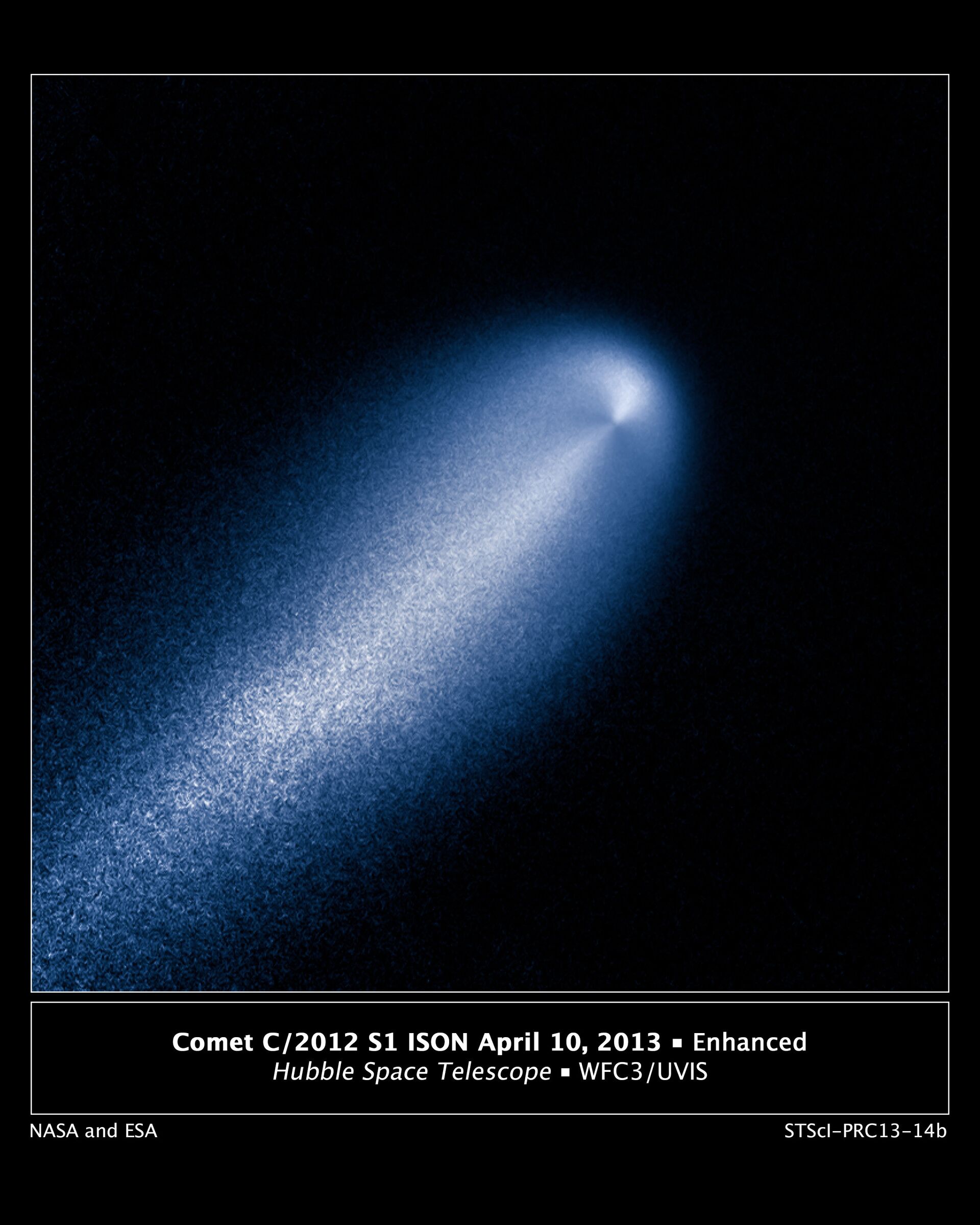
An enhanced image by Hubble of the comet ISON shows dust particles being released from the comet’s core
© NASA . ESA, J.-Y. Li (Planetary Science Institute), Hubble Comet ISON Imaging Science Team
When and How Can I See the Green Comet?
The best way to observe the green comet is to arm oneself with a pair of binoculars and take advantage of a new moon, which offers darker skies.
"Comets are notoriously unpredictable, but if this one continues its current trend in brightness, it'll be easy to spot with binoculars, and it's just possible it could become visible to the unaided eye under dark skies," NASA stated earlier this month.
The eerily green comet is currently visible from nearly anywhere on our planet. In the Northern Hemisphere, where countries such as Canada, Japan, and the United States of America are situated, one should look up at the night sky before dawn in late January.
In the Southern Hemisphere, for countries like Argentina, New Zealand, and South Africa, waiting until early February is best. The comet will be the brightest on January 31 and February 1. During that time, the "snowball" will be 26 million miles (42.4 million km) away from Earth. Those eager to see it are advised to look for the green comet near the bright star Polaris, also known as the North Star.
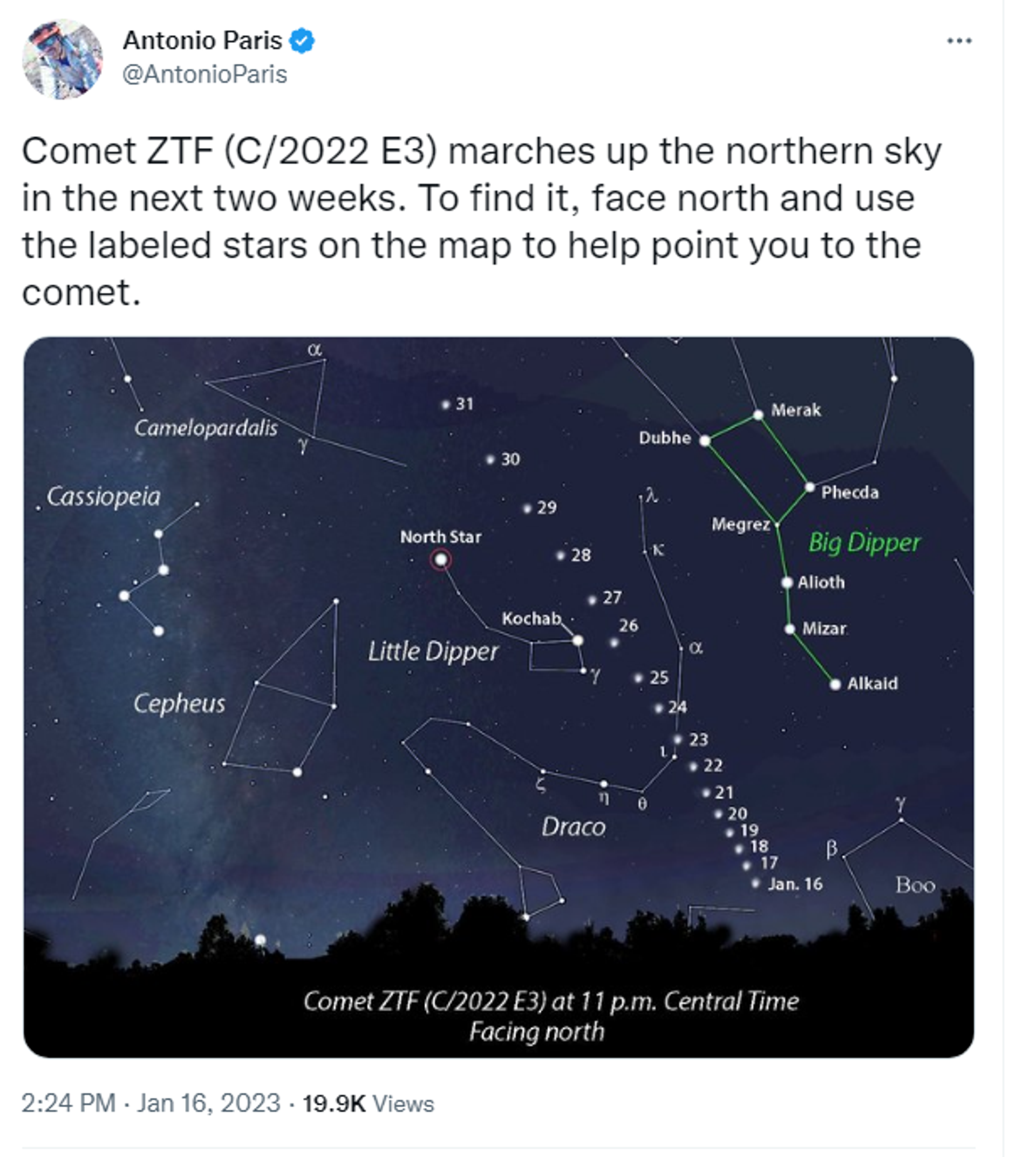
Twitter screenshot.
© Photo : Twitter
On the night of the new moon, January 21, which brought with it the darkest skies, the comet was close to Draco. This is a dragon-shaped constellation lodged between the Big Dipper and the Little Dipper.
C/2022 E3 (ZTF) will be between the Big Dipper’s “cup” and Polaris on January 30.
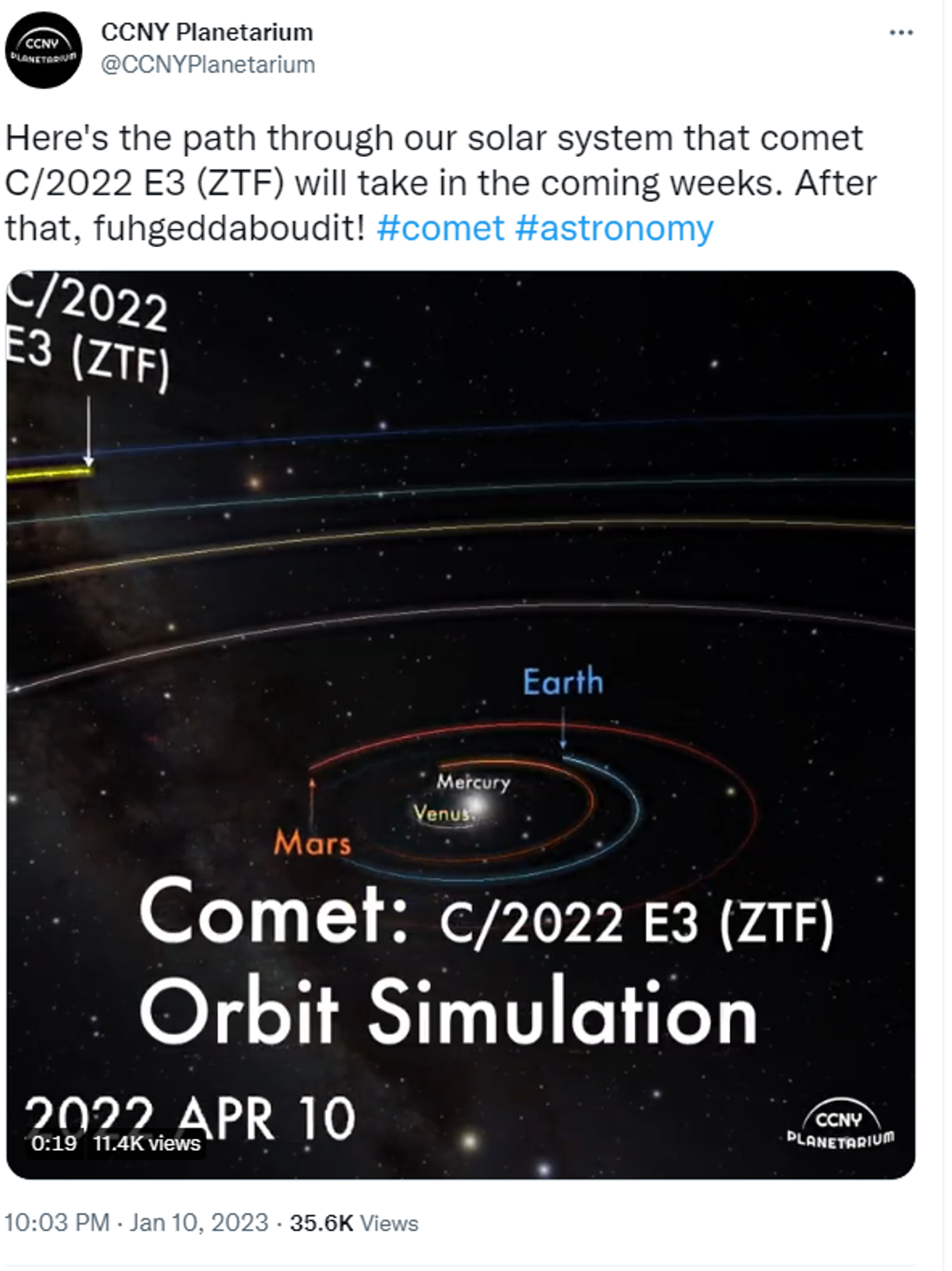
Twitter screenshot.
© Photo : Twitter
As for what will happen next to C/2022 E3 (ZTF), the Sun’s gravitational power may set it off on yet another long trip around our planet Earth, to revisit us 50,000 years later. Or the Sun's forces may jettison it from the solar system onto an interstellar journey. When volatile ices comprising a comet boil away, sometimes the remaining leftovers of dust and rock completely disintegrate.
